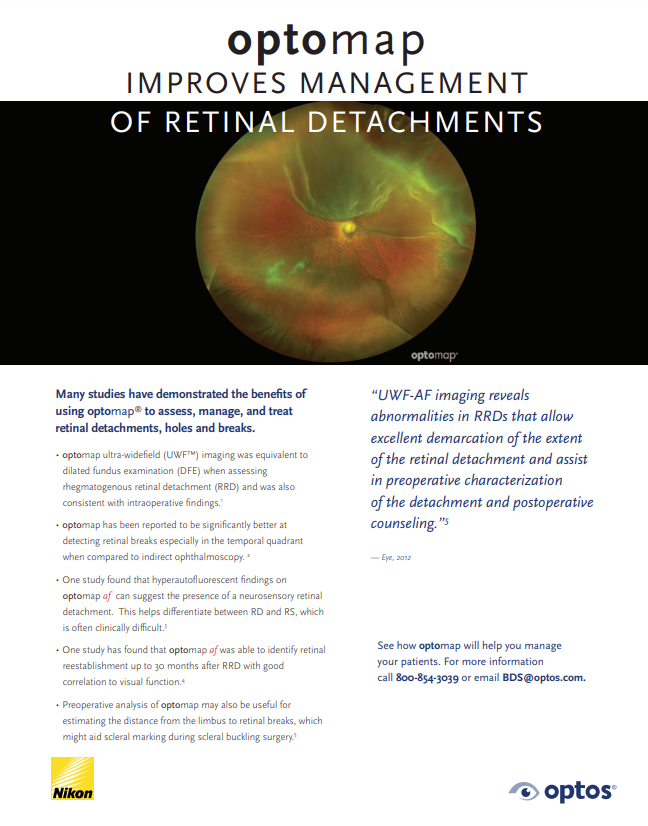optomap ultra-widefield (UWF™) imaging is a proven tool for effective clinical decision-making. More than 2,000 clinical trials and hundreds of published case studies and testimonials prove the value of optomap imaging in diagnosis, disease management, and patient engagement, standing as a core pillar of Optos technology.
Eye care providers are utilizing UWF imaging to give themselves complete and otherwise unobtainable diagnostic imagery. optomap allows analysis of peripheral retinal pathology in order to fully assess the extent of disease and risk of progression. Individual patient management plans are produced that address risk, prevention, and the most effective treatment plan for those individual patients. These steps together allow for continued improvement in patient outcomes.
Utilizing optomap for pathology in the far periphery
Many studies have demonstrated the benefits of using optomap to assess, manage, and treat retinal detachments, holes, and breaks.
- optomap UWF imaging is equivalent to DFE when assessing rhegmatogenous retinal detachments (RRD)
- optomap has been reported to be significantly better at detecting retinal breaks, especially in the temporal quadrant
- optomap af images can suggest the presence of a neurosensory retinal detachment
- optomap af can identify reestablishment up to 30 months after RRD with good correlation to visual function
- Preoperative analysis of optomap is useful for estimating the distance from the limbus to retinal breaks during scleral buckle surgery
Using optomap for high-risk proliferative diabetic retinopathy (PDR) which often presents with lesions into the far periphery, significantly more lesions can be seen across the periphery than with traditional ETDRS montage imaging. These lesions, which could have otherwise gone undetected, are now recognized as increasing the risk of disease progression. With UWF imaging, eye care providers can better manage patients with PDR and prevent the progression of such diseases, improving patient outcomes.
Learn more about how optomap can assist you with patient management and potentially improve your outcomes.
